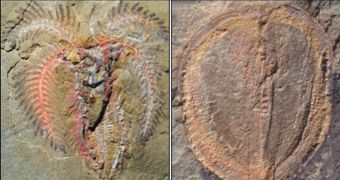While digging at a site in Morocco, researchers managed to discover a new series of fossils, which seem to play a very important role in clearing up some of the aspects of the current record of early marine lifeforms. Experts have always said that the dataset was not complete, but even so numerous black holes existed within. Thanks to the discovery of these remains, which show that soft-bodied marine animals lived at a time when researchers thought they had been extinct, paleontologists and anthropologists can now get a clearer picture of how the tree of marine life developed in the early days.
And by early scientists do mean early. The recently-discovered fossils date back to between 470 and 480 million years ago, which basically placed them shortly after the not-so-well-known Cambrian–Ordovician extinction event, which took place some 488 million years ago. It is perhaps best known for marking the end of the Cambrian Period, and the beginning of the Ordovician Period. Researchers have been wondering for a very long time about how many species managed to survive that particular extinction event.
This becomes critically important when taking into account the fact that two additional extinction events had taken place within a very short geological time frame. The End Botomian event happened some 517 million years ago, and the Dresbachian event followed shortly after, some 502 million years ago. So basically there were three successive catastrophic events, each separated by 14 to 16 million years of calm. Scientists were very curious to learn how life rebounded from this constant pounding. It is for example known that landmass-based lifeforms took more than 30 million years to recover after the Permian-Triassic extinction event (aka The Great Dying), which happened 251.4 million years ago.
The new fossil findings provide “a much more complete record of early marine life than we've ever had before,” told the BBC News Yale University professor Derek Briggs. The expert was one of the authors for the new study, which is detailed in the latest issue of the highly-regarded scientific publication Nature. “There was an anomaly in the fossil record [before this study]. Most of these [soft-bodied] animals just seemed to disappear at the end of the Middle Cambrian,” added the lead researcher on the investigation, Yale University professor Dr Peter Van Roy. The new fossils look remarkably similar to the ones found in the renowned Burgess Shale in British Columbia, Canada.
“[These specimens have] shown that some of the organisms that we thought were exclusive to Cambrian actually persisted until the Ordovician,” Briggs added for the British news agency. “We're only scratching the surface. I'm certain there will be more spectacular fossils coming out of this site in the near future,” Van Roy concluded.

 14 DAY TRIAL //
14 DAY TRIAL //